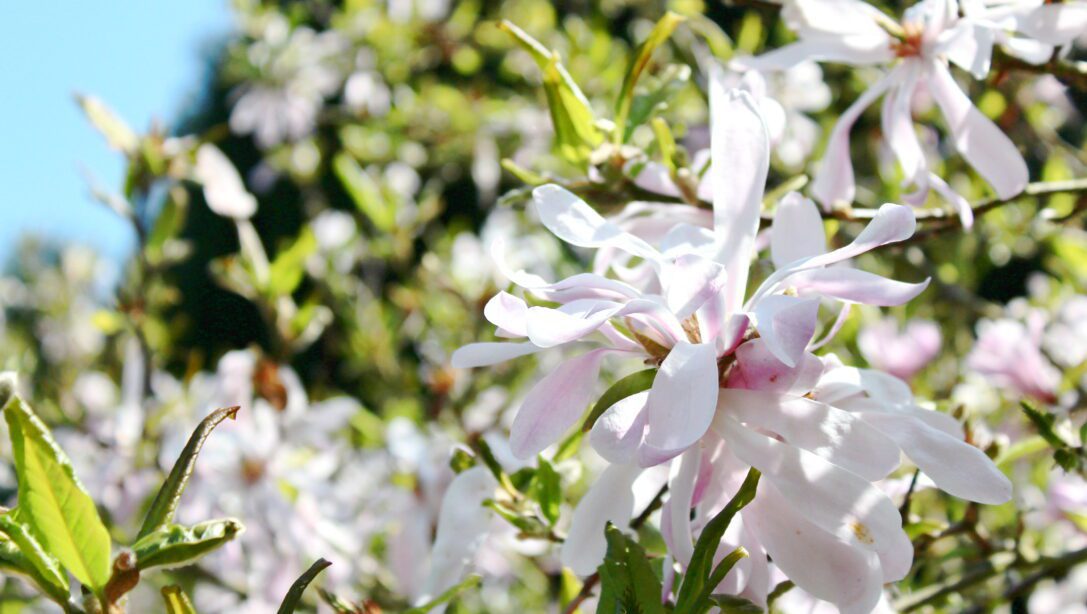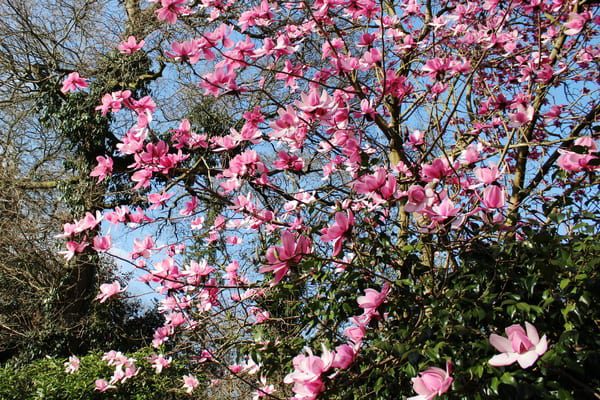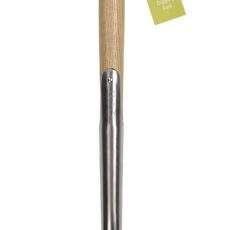Magnolia make strikingly beautiful evergreen or deciduous shrubs and trees, often grown as statement specimen plants in the garden. Their volumes of flowers in shades from white to deep pink are one of the best loved sights in spring and early summer. In autumn, you will often spot extraordinary cone shaped fruit.
Magnolias have an amazing ability to endure. It is thought, through fossil records that magnolias were around some 20 million years ago and relatives of the magnolia many millions before that. Today there are more than 200 species of magnolia ranging from smaller shrubs versions to trees well over 10 metres in height.
Magnolias enjoy sunny spots, but will also grow in light shade. It’s best to avoid planting in frost pockets and keep sheltered from the wind to avoid risk of damaging the exquisite flowers. Magnolias will grow on any fertile, free draining soil. Many varieties have a preference for neutral to slightly acidic soil types, so be aware of this if you are growing on chalk.
View our collection of plantsTop Varieties
There are a large number of magnolia varieties; these are some of our favourites grown by Hillier at our nurseries in Hampshire.
Magnolia ‘Heaven Scent’
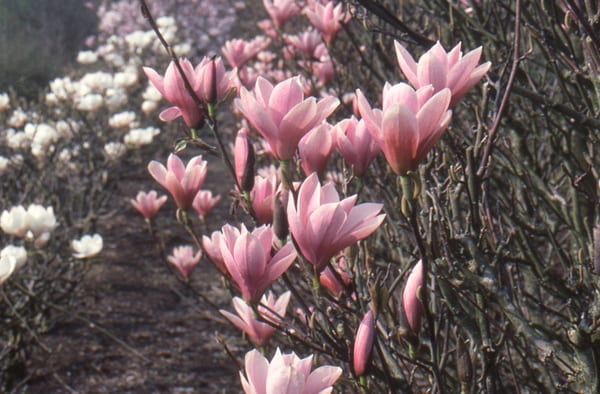
Magnolia ‘Heaven Scent’ is a hardy, deciduous shrub variety of magnolia. It has dark green foliage and cup shaped flowers with rosy pink tepals that quickly fade to pale pink with a magenta central stripe on the outside in spring. Reaching around 4 metres in height, this is a great variety for a mixed border, spring garden or as an architectural centrepiece.
| Sun requirements | Full sun to partial shade. Keep sheltered from wind and frost pockets. |
| Soil | Any well-drained, fertile soil |
| Hardiness | Hardy (be aware of possible frost damage to flowers) |
| Size | Grows to 4m height x 2m spread |
| Flowering Time | April to May |
Magnolia loebneri ‘Leonard Messel’
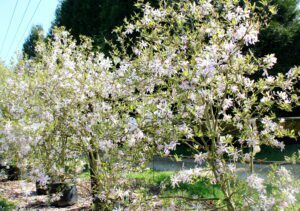
This magnolia variety is a hardy, deciduous shrub with narrowly ovate leaves. It produces beautiful large, scented, lilac pink flowers that are paler within. These open before the leaves are produced in spring. This is a great plant for a mixed border, spring garden or as an architectural centrepiece.
| Sun requirements | Full sun to partial shade. Keep sheltered from wind and frost pockets. |
| Soil | Any well-drained, fertile soil |
| Hardiness | Hardy (be aware of possible frost damage to flowers) |
| Size | Grows to 4m height x 2m spread |
| Flowering Time | April to June |
Magnolia stellata
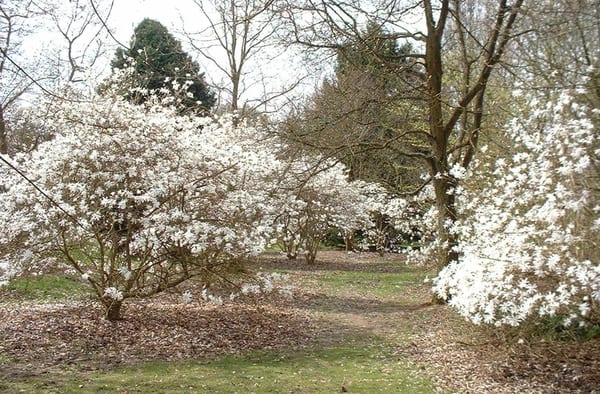
Also known as star magnolia, this is a hardy, slow-growing deciduous shrub variety with a broadly rounded habit. Growing to just 1.5 metres in height, this is a more compact variety, ideal for smaller spaces or gardens. The green leaves are narrowly obovate and the flowers in spring are white, with spreading white tepals. Place in a mixed border, spring garden or position as an architectural centrepiece.
| Sun requirements | Full sun to partial shade. Keep sheltered from wind and frost pockets. |
| Soil | Any well-drained, fertile soil |
| Hardiness | Hardy (be aware of possible frost damage to flowers) |
| Size | Grows to 1.5m height x 2m spread |
| Flowering Time | March to April |
Magnolia stellata ‘Royal Star’
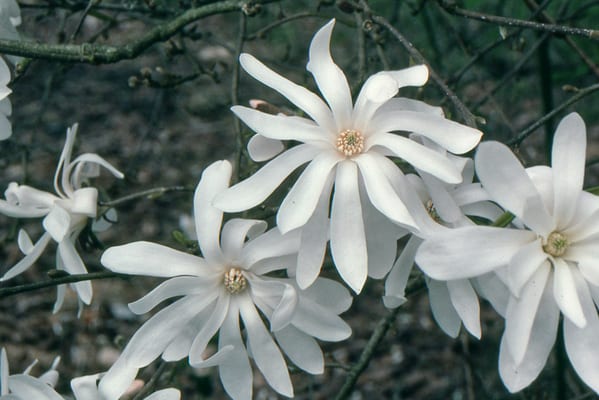
This is another compact variety of star magnolia – a hardy, rounded, deciduous shrub with green leaves. The pale pink buds open in early spring, producing white flowers with up to 30 narrow tepals. It is ideal in a mixed border, with other spring flowering plants or as a statement specimen.
| Sun requirements | Full sun to partial shade. Keep sheltered from wind and frost pockets. |
| Soil | Any well-drained, fertile soil |
| Hardiness | Hardy (be aware of possible frost damage to flowers) |
| Size | Grows to 1.5m height x 2m spread |
| Flowering Time | April to May |
Magnolia stellata ‘Waterlily’
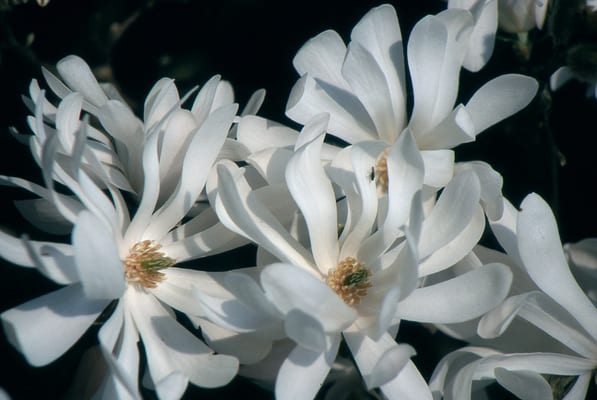
This hardy, deciduous star magnolia creates a rounded, compact shape with mid-green leaves. In spring before or as the leaves emerge, silky buds open to star-shaped, white flowers. Position this magnolia in a mixed border, or enjoy as an architectural centrepiece.
| Sun requirements | Full sun to partial shade. Keep sheltered from wind and frost pockets. |
| Soil | Any well-drained, fertile soil |
| Hardiness | Hardy (be aware of possible frost damage to flowers) |
| Size | Grows to 1.5m height x 2m spread |
| Flowering Time | April to May |
Magnolia ‘Susan’
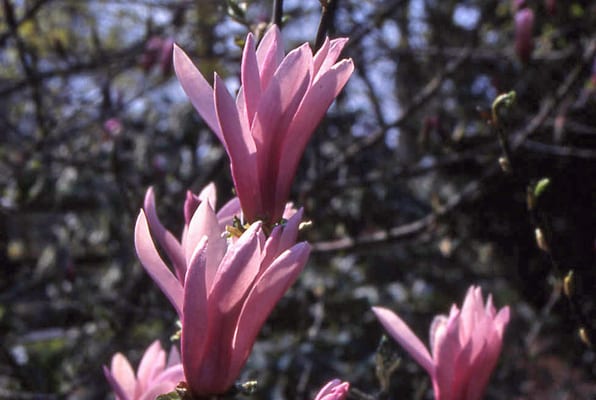
M. Susan is a hardy, upright, deciduous shrub variety of magnolia with large green leaves. Its deep reddish-purple buds open in mid spring to fragrant, cupped flowers with tepals that are red-purple outside and pink within. This is a great plant for a mixed border or as a focal plant.
| Sun requirements | Full sun to partial shade. Keep sheltered from wind and frost pockets. |
| Soil | Any well-drained, fertile soil |
| Hardiness | Hardy (be aware of possible frost damage to flowers) |
| Size | Grows to 4m height x 3m spread |
| Flowering Time | April to May |
Growing Guide
Planting
When planting your magnolia in your garden, dig a hole the same depth as the pot your plant is in; magnolias are shallow rooting so do not require a great depth of soil. Add good quality compost or leaf mould to the soil. They are generally hardy, but position in a spot that is sheltered from winds and is not a frost pocket to avoid any damage to the beautiful flowers in spring.
Carefully remove your plant from the pot, being extra careful not to damage the roots. Position the plant in the middle of the hole and back fill with compost, firming it in. Water well and continue to keep well watered to aid successful establishment.
Watering
Before it’s established ensure the soil around the root remains moist but not over logged, this can be done by infrequent deep watering. Applying mulch to the roots will also help in the long run with moisture retention and weed control.
Pruning
Magnolias require very little in the way of pruning. In fact heavy pruning can distress the plant especially once it reaches maturity. If you want to prune your magnolia to keep the size in check, prune gently between mid summer and mid autumn. Remove weak or damaged branches and any horizontally crossing shoots.
Complementary Planting Ideas
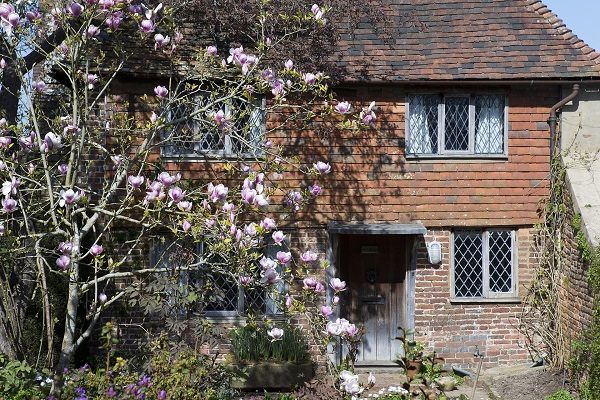
Magnolias are brilliant plants as part of a mixed border, bringing height and drawing the eye upwards.
They also make great statement plants; architectural focal points for the garden, positioned at the back or front of the house.
One of the magnificent mature magnolias in full spring bloom at Sir Harold Hillier Gardens
Facts
1. Some varieties of magnolia produce absolutely enormous flowers – up to 35cm in width!
2. Magnolias are named after the French botanist Pierre Magnol, whose work included devising the concept of plant families and botanical classification. This name has been in use since in 1703, when another French botanist, Charles Plumier, discovered a flowering tree on the island of Martinique and named it Magnolia, after Magnol.
3. Magnolias are symbolic in many parts of the world. Varieties of magnolia are used as the official symbol of Shanghai, Mississippi and North Korea among others.
4. Magnolias are described as having tepals (not petals). This is because the outer parts of the magnolia flower (known collectively as the perianth) are very similar in appearance, meaning the petals and sepals are indistinguishable.


